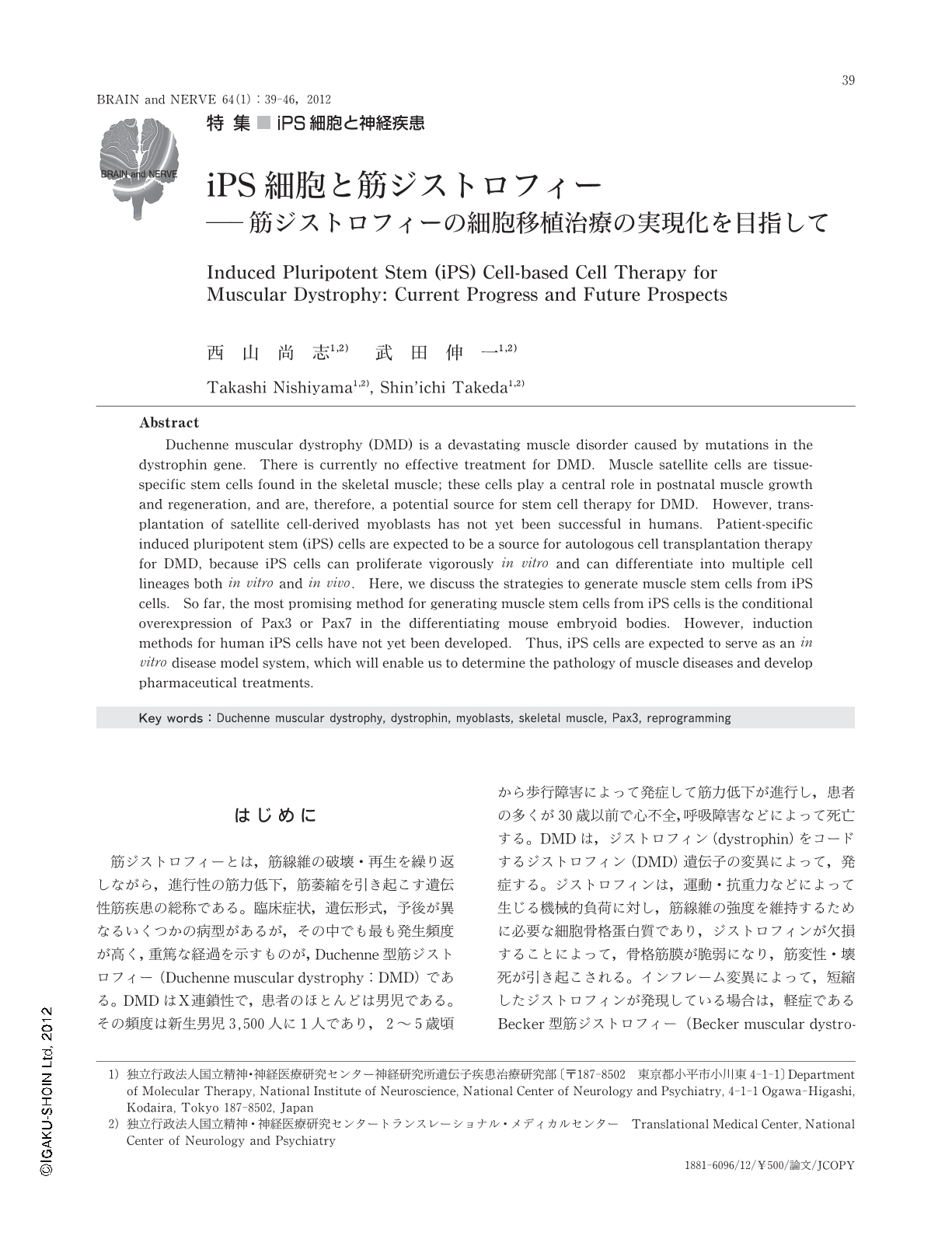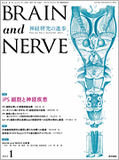Japanese
English
- 有料閲覧
- Abstract 文献概要
- 1ページ目 Look Inside
- 参考文献 Reference
はじめに
筋ジストロフィーとは,筋線維の破壊・再生を繰り返しながら,進行性の筋力低下,筋萎縮を引き起こす遺伝性筋疾患の総称である。臨床症状,遺伝形式,予後が異なるいくつかの病型があるが,その中でも最も発生頻度が高く,重篤な経過を示すものが,Duchenne型筋ジストロフィー(Duchenne muscular dystrophy:DMD)である。DMDはX連鎖性で,患者のほとんどは男児である。その頻度は新生男児3,500人に1人であり,2~5歳頃から歩行障害によって発症して筋力低下が進行し,患者の多くが30歳以前で心不全,呼吸障害などによって死亡する。DMDは,ジストロフィン(dystrophin)をコードするジストロフィン(DMD)遺伝子の変異によって,発症する。ジストロフィンは,運動・抗重力などによって生じる機械的負荷に対し,筋線維の強度を維持するために必要な細胞骨格蛋白質であり,ジストロフィンが欠損することによって,骨格筋膜が脆弱になり,筋変性・壊死が引き起こされる。インフレーム変異によって,短縮したジストロフィンが発現している場合は,軽症であるBecker型筋ジストロフィー(Becker muscular dystrophy:BMD)と呼ばれる表現型をとる。本稿ではDMDの治療研究の現状とiPSテクノロジーを用いたDMDの再生医療研究について概説する。
Abstract
Duchenne muscular dystrophy (DMD) is a devastating muscle disorder caused by mutations in the dystrophin gene. There is currently no effective treatment for DMD. Muscle satellite cells are tissue-specific stem cells found in the skeletal muscle; these cells play a central role in postnatal muscle growth and regeneration,and are,therefore,a potential source for stem cell therapy for DMD. However,transplantation of satellite cell-derived myoblasts has not yet been successful in humans. Patient-specific induced pluripotent stem (iPS) cells are expected to be a source for autologous cell transplantation therapy for DMD,because iPS cells can proliferate vigorously in vitro and can differentiate into multiple cell lineages both in vitro and in vivo. Here,we discuss the strategies to generate muscle stem cells from iPS cells. So far,the most promising method for generating muscle stem cells from iPS cells is the conditional overexpression of Pax3 or Pax7 in the differentiating mouse embryoid bodies. However,induction methods for human iPS cells have not yet been developed. Thus,iPS cells are expected to serve as an in vitro disease model system,which will enable us to determine the pathology of muscle diseases and develop pharmaceutical treatments.

Copyright © 2012, Igaku-Shoin Ltd. All rights reserved.


